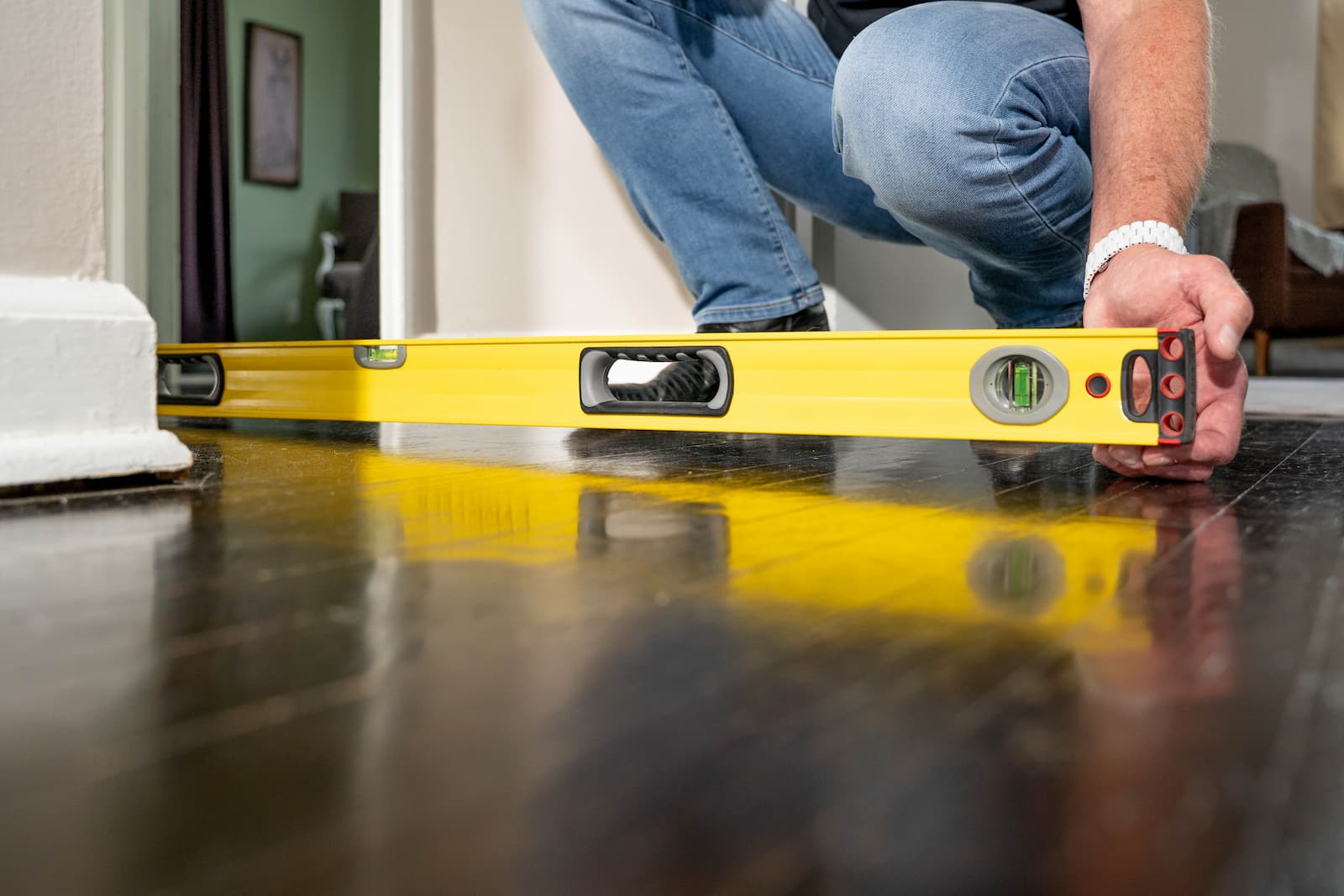Are Sagging Floors Caused by Foundation Problems?

If you’ve noticed your floors starting to slope, dip or feel “bouncy” underfoot, you’re not alone. The same goes for visible gaps between your floors and baseboards. That’s because sagging floors are a surprisingly common issue in the US and Canada, especially in older homes.
What Does a Sagging Floor Indicate?
First and foremost, a sagging floor can be a sign of structural trouble. After all, a house isn’t built with intentionally bouncy or gappy floors! And while it’s true that sagging floors in old homes are relatively common, that doesn’t mean they’re harmless. In many cases, they’re a symptom of deeper issues in the structure’s foundation or support system.
Common causes of sagging floors include:
- Foundation settlement, where the soil beneath your home shifts or compresses
- Sagging floor joists due to incorrect spacing, excess weight or long-term wear
- Wood rot, often resulting from high humidity or plumbing leaks
Left unchecked, these problems can lead to more than just uneven floors; they can compromise the structural integrity of your home and lead to more extensive — and expensive — repairs down the road.
Do Uneven Floors Always Mean Foundation Problems?
Not always, but often enough that it’s worth investigating. If your home is settling or has inadequate support beneath the floor system, the result is usually some degree of floor sagging. And if you see floor gaps, cracks in interior walls or doors that won’t close properly (in addition to a sagging floor), your foundation is almost definitely telling you something.
And that something is to call in the experts.
A qualified foundation repair contractor can inspect sagging floors to determine whether the cause is structural damage, moisture or simply normal wear. This will provide you with the peace of mind of knowing the cause of the problem.
How to Fix Sagging Floors
Multiple floor leveling solutions are available, from temporary shims to total floor replacement. But if your sagging floors are caused by a failing foundation or inadequate support, the best long-term solution is to address the underlying cause.
One proven method is the SmartJack® system, a permanent beam and joist support solution that reinforces and, in many cases, re-levels sagging floors from below. It’s adjustable, made from corrosion-resistant steel and designed specifically to address moisture-related sagging in crawl spaces and basements.
What About the Cost?
As with any home repair, sagging floor repair costs can vary depending on the severity of the problem and the method used. Temporary fixes might be cheaper up front, but can lead to bigger expenses later. Permanent solutions like SmartJack may cost more initially, but they add stability, resale value and, most importantly, peace of mind. After all, this is your home we’re talking about. More than just your largest financial investment, it’s where you and your family live.
Are Sagging Floors Covered by Insurance?
In most cases, foundation issues causing sagging floors aren’t covered by homeowners’ insurance unless a covered event (like flooding or an earthquake) caused the damage. It’s always best to check with your insurance provider. But most reputable foundation repair contractors will offer financing options to make the repair as easy as possible on your finances.
Don’t Wait to Get Your Sagging Floors Checked Out!
The dangers of sagging floors go beyond daily annoyances or cosmetic issues because they often indicate serious problems that will only worsen over time. So, if you suspect your floors are sagging, we suggest you find a reputable foundation repair contractor near you and schedule an inspection as soon as possible.
It’s the first step toward making your home safer, more comfortable and structurally sound for years to come.